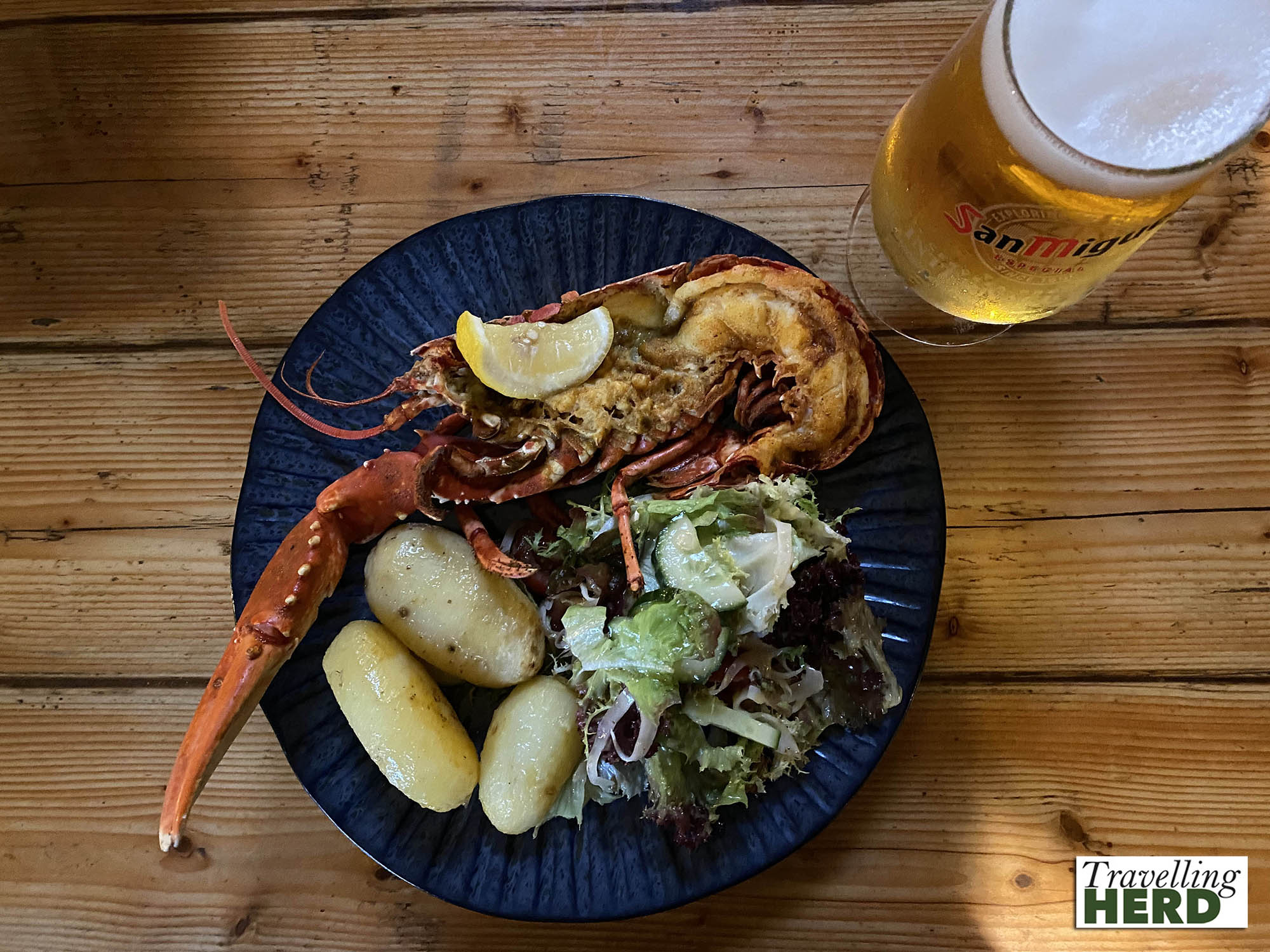Monday 13th September 2021
Once again the extreme tides meant that we would have more time than usual on St Martin’s and would therefore have time to walk all round the island, which is the northernmost of the inhabited onesmaking up the Isles of Scilly.
The Firethorn dropped us at the quay in Higher Town.
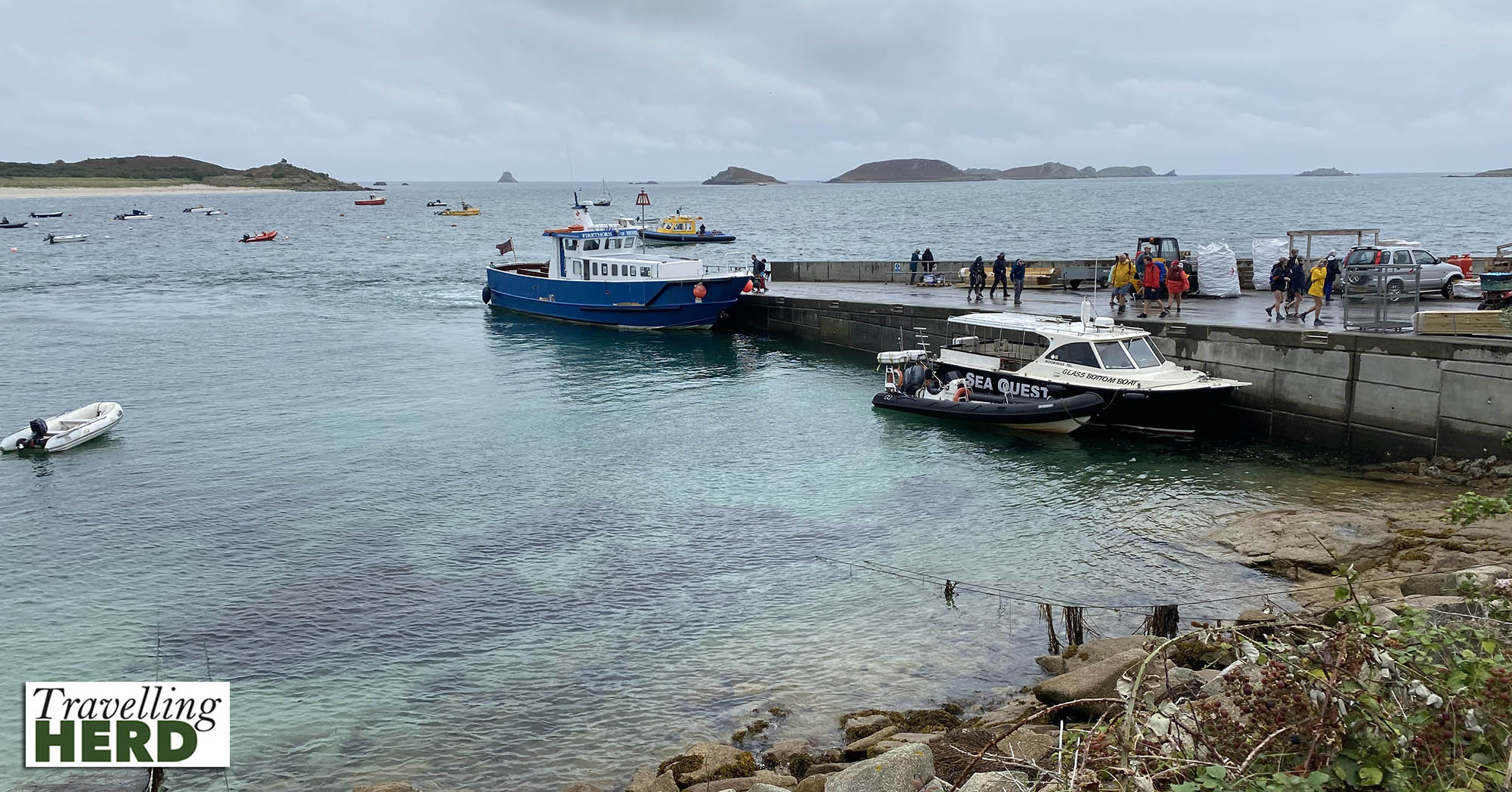
In what must surely be one of the most prosaic examples of place naming in the UK, the three main settlements on St Martin’s are called Higher Town, Middle Town and Lower Town, although it could be argued that the use of the word “town” must itself have required quite a feat of imagination: in the 2011 census the island reported a population of just 136.
Initially we set off to walk anti-clockwise round the island towards the highest point at its northeast corner on Chapel Down, passing an unexpected vineyard on the way.
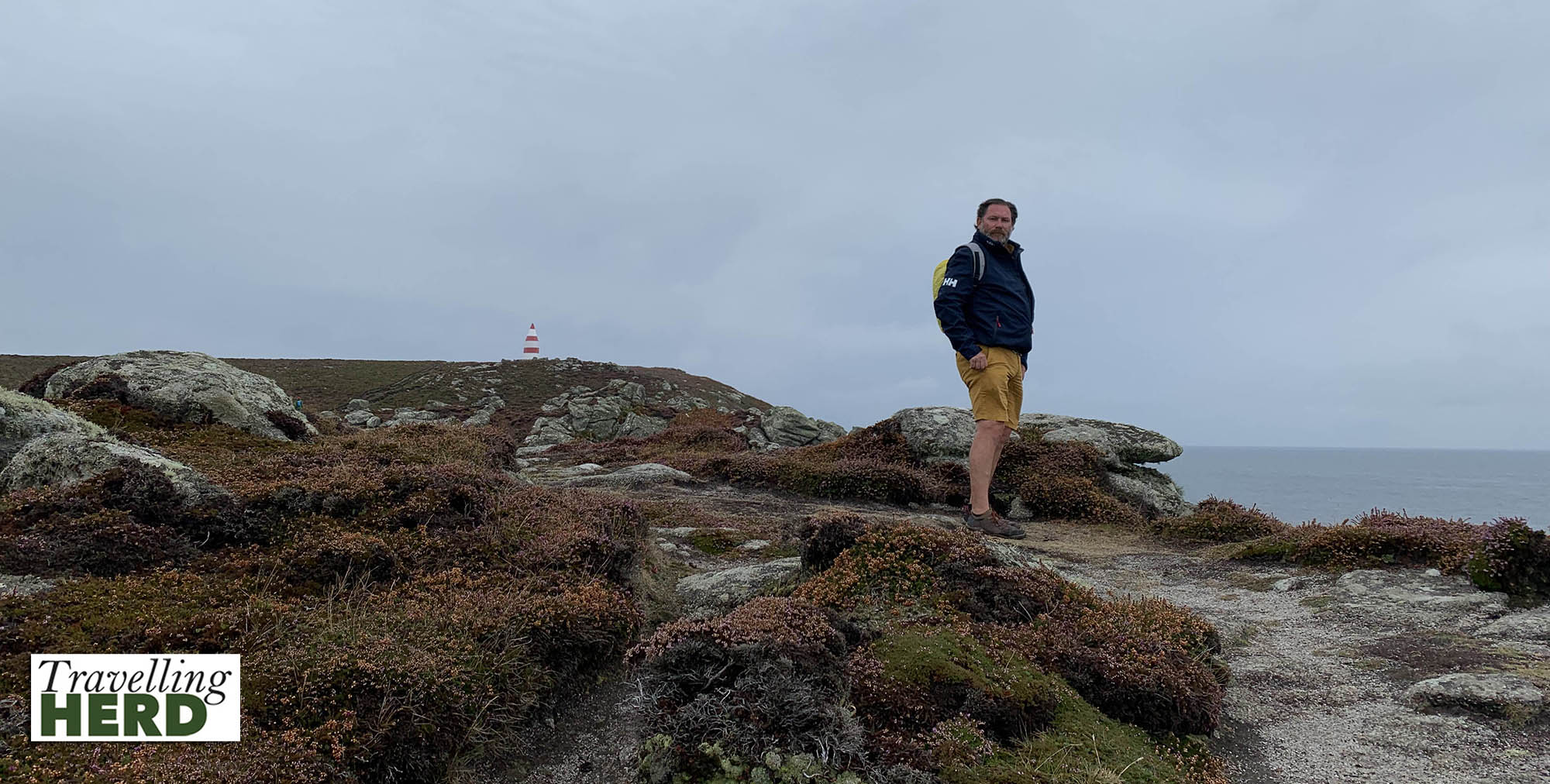
The highest point is dominated by a large red and white striped daymark or unlighted beacon, reminiscent of the upper section of Tintin’s rocket, which was visible from some distance across the bays and inlets as we walked. The date above the blocked, arched doorway on the daymark reads 1637 but it was in fact apparently erected as an aid to shipping in 1683. We did not discover the reason for this discrepancy.
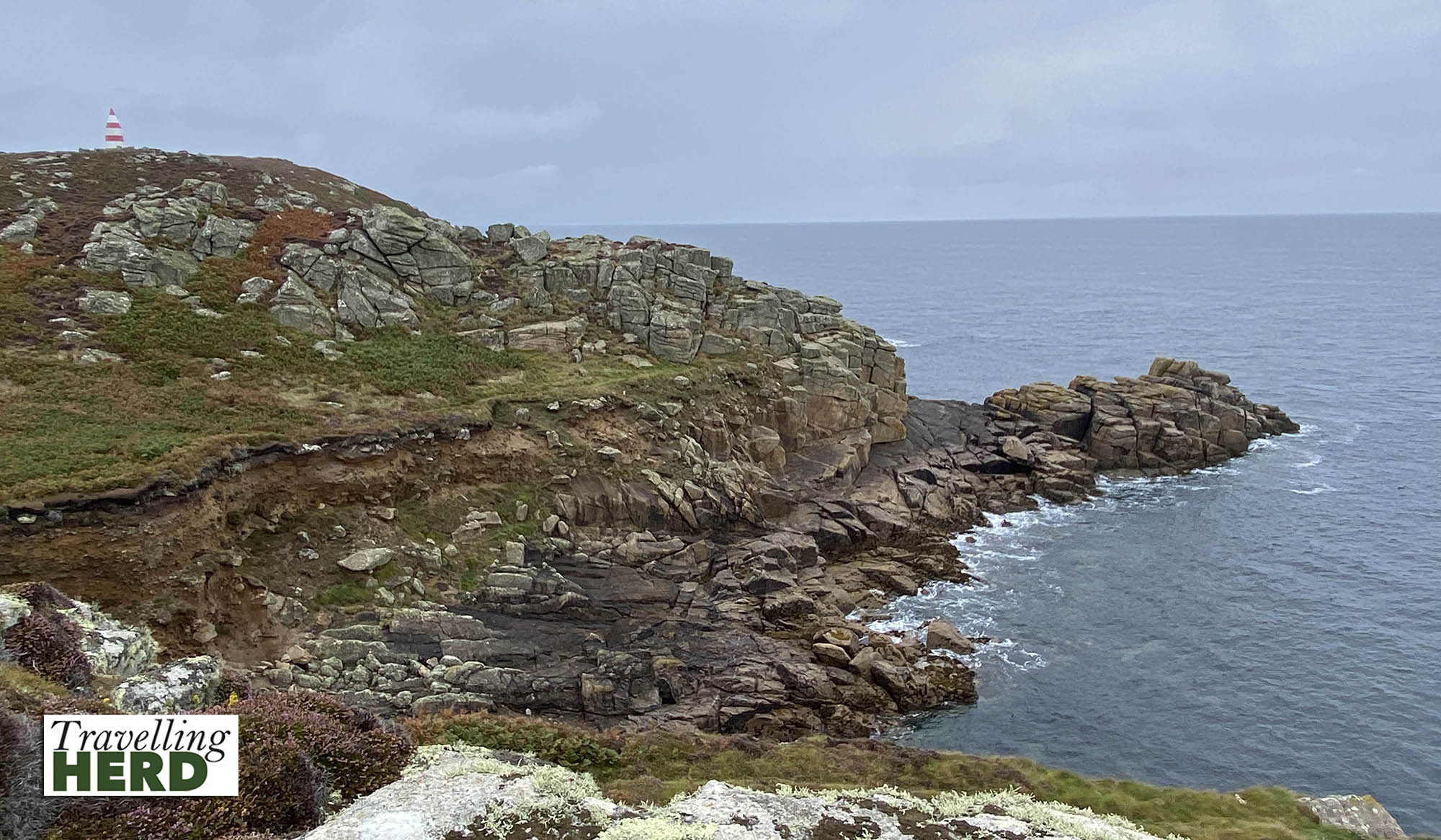
Originally painted white, by 1833 it had been painted red and is currently sporting jaunty red and white stripes [see Selfie of the day]. This is the second highest point in the Isles of Scilly after Telegraph on St Mary’s.
As always in the Scillies, the scenery was breathtaking. From here we headed one towards Turfy Hill Point and . . .

. . . Top Rock Hill where the locals had continued to demonstrate their penchant for purely descriptive place names.
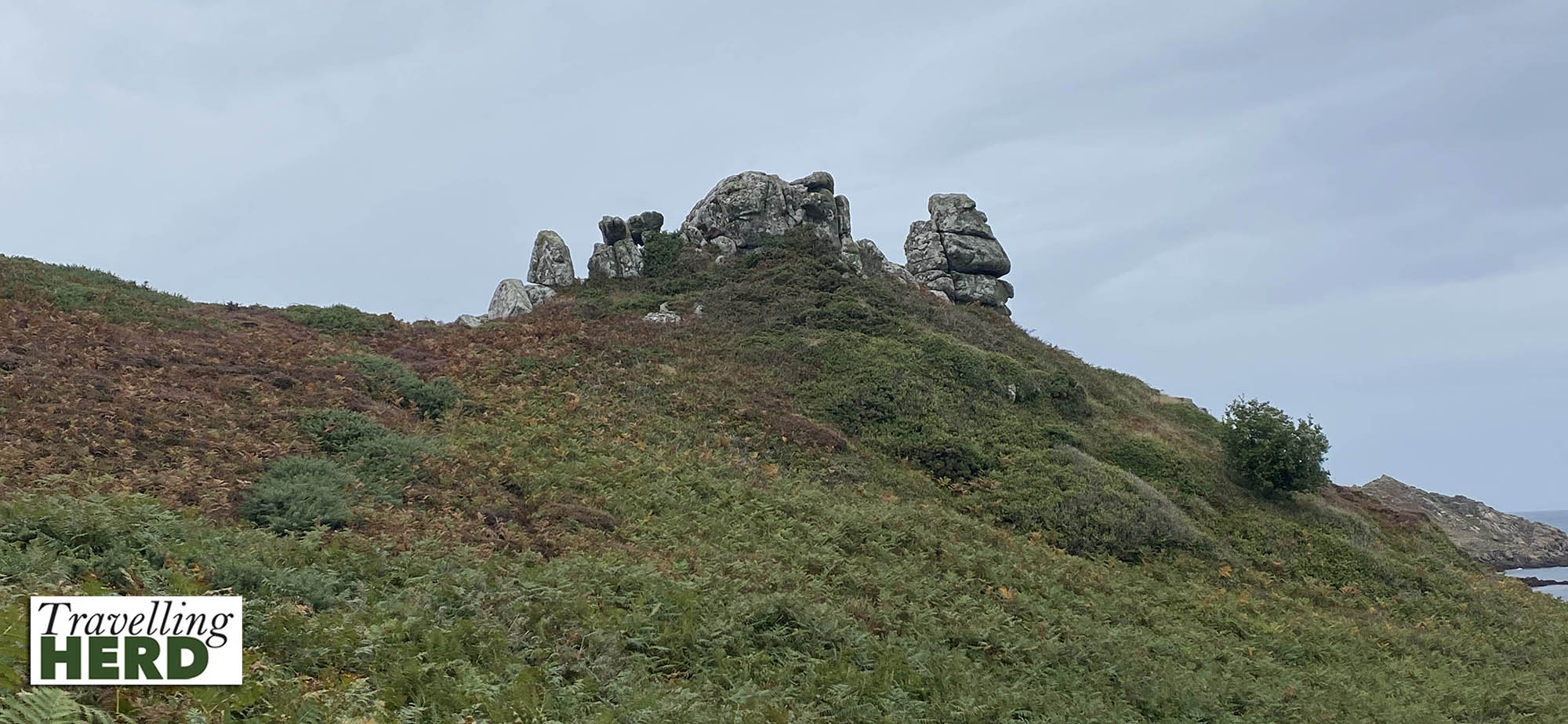
At low tides, a spit emerges allowing access to White Island, uninhabited except by breeding seabirds.
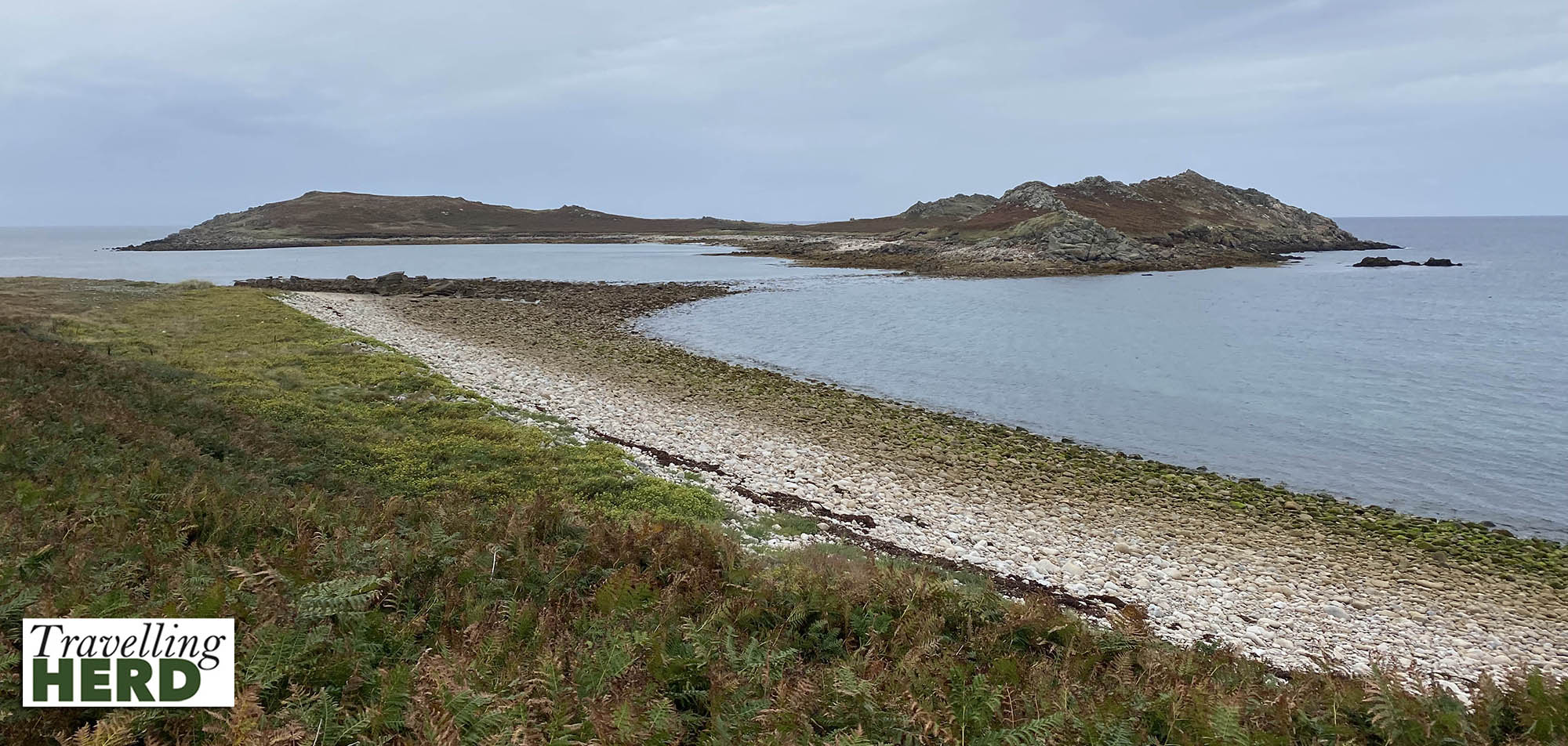
There were also views past Tean now uninhabited towards Tresco.
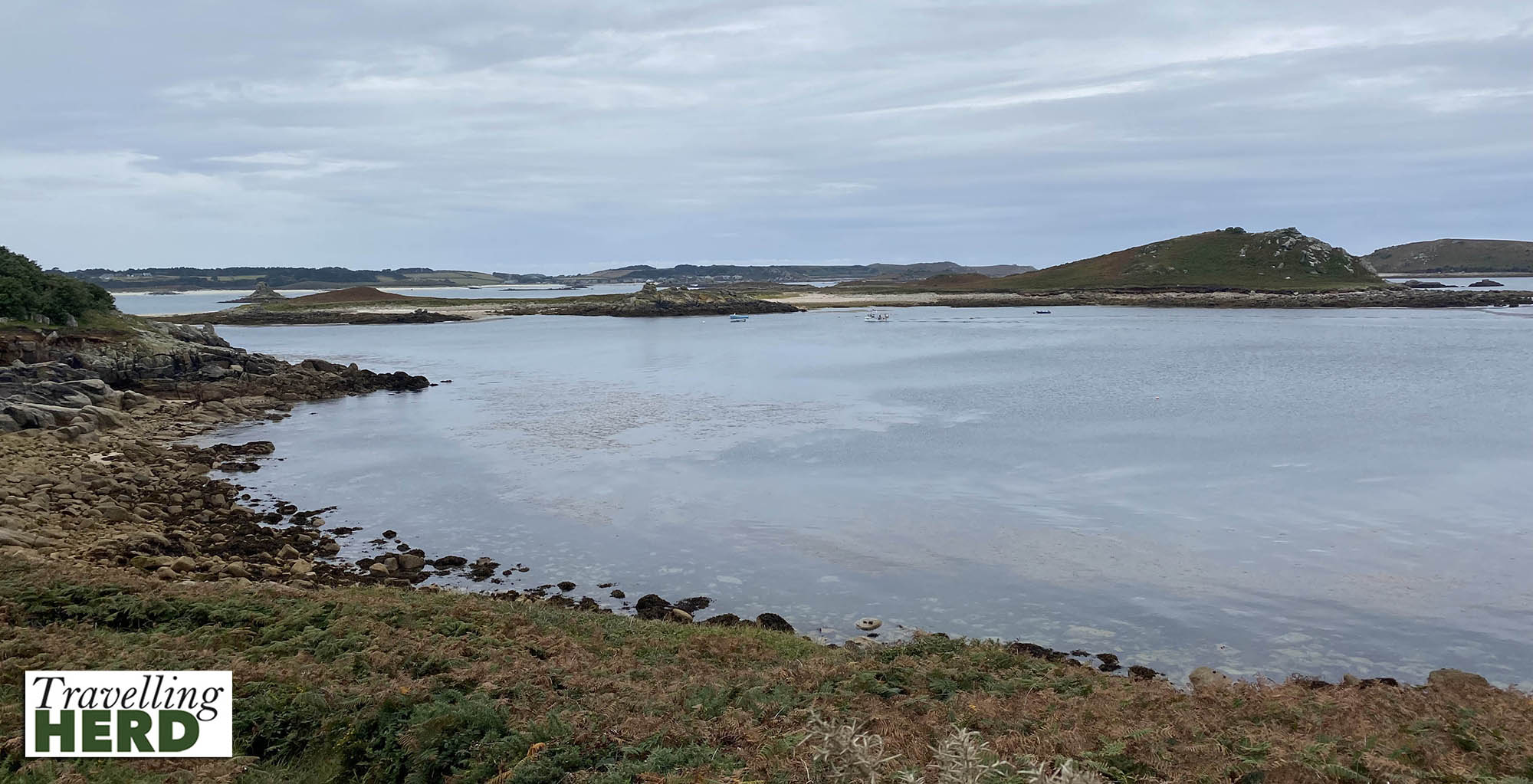
When we hired a boat a few years ago we crossed to St Martin’s and had coffee in the garden at the Karma Hotel overlooking the quay at Lower Town. However, fortunately for us, this year entry was restricted to residents only. A short but steep walk took us to The Seven Stones Inn which features a beautiful spacious interior.
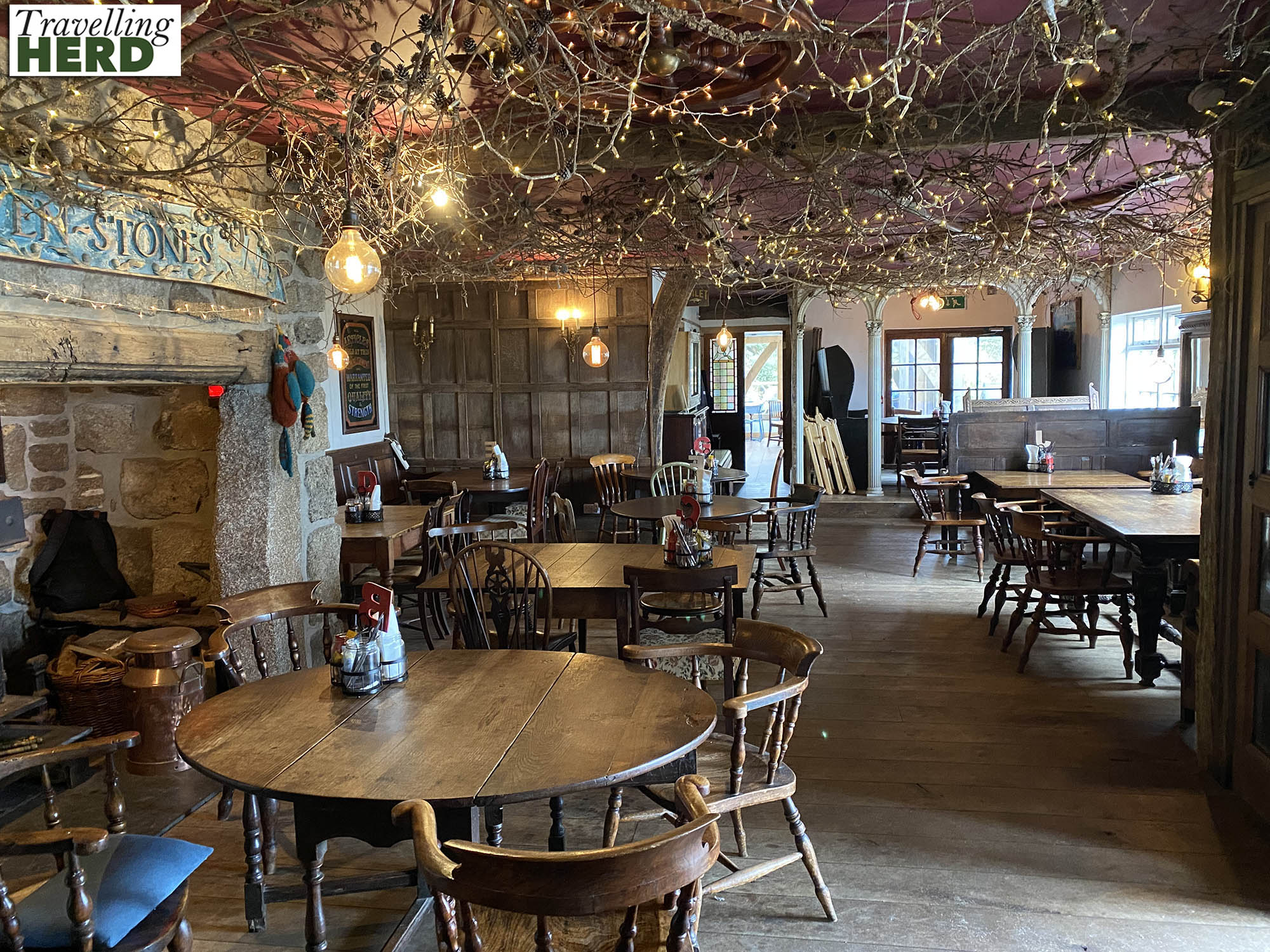
Even though rain threatened, the majority of the customers had opted to sit outside to enjoy the beautiful views at this family run pub. Food is sourced locally when possible and Matilda enjoyed a very tasty prawn wrap to keep her going through the rest if the walk. We had never visited before but it has instantly joined our list of favourite pubs with amazing views.
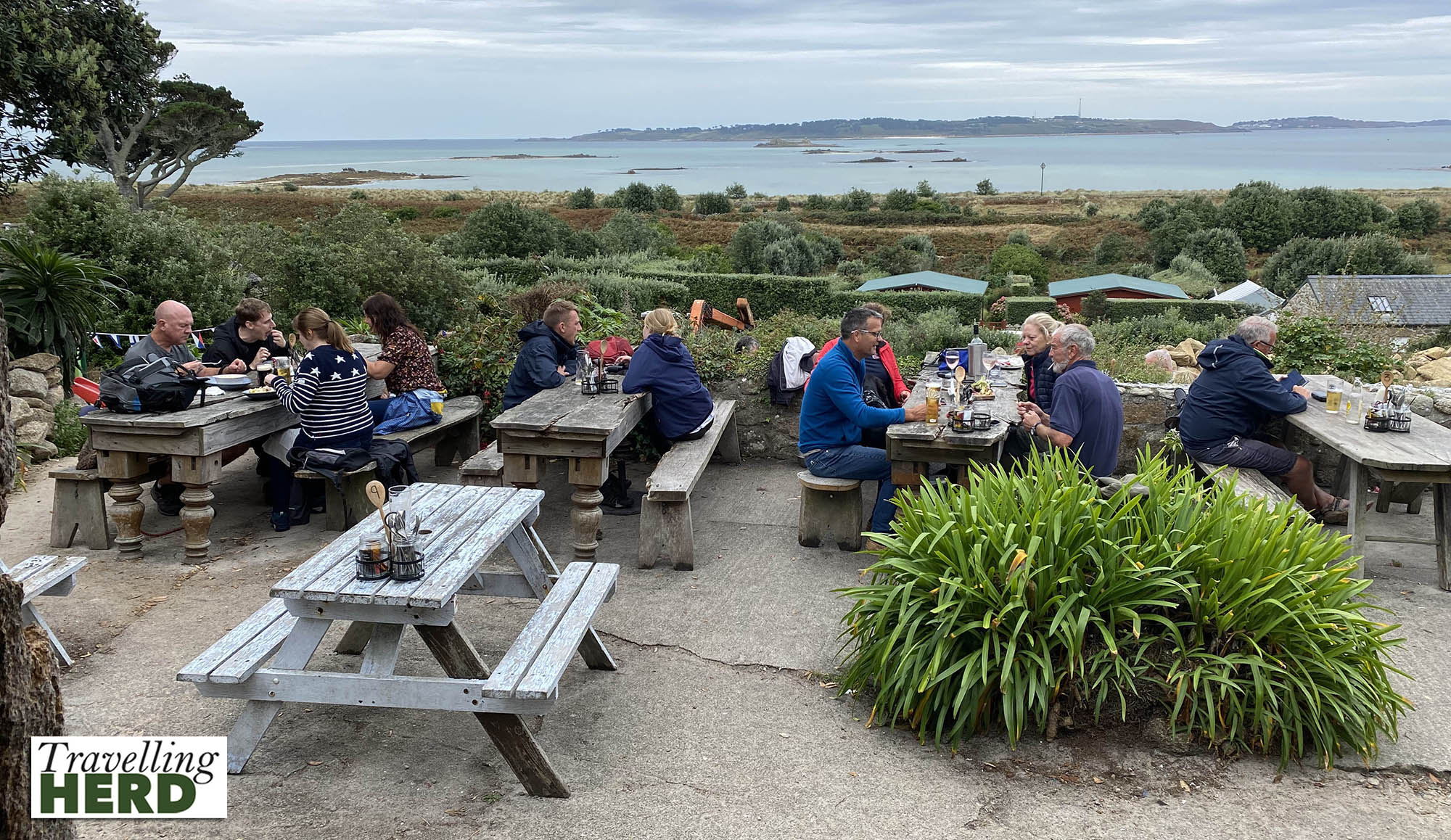
As Matilda wanted to close her route map on Strava, we then walked back towards Higher Town with views back to Tresco and on past . . .
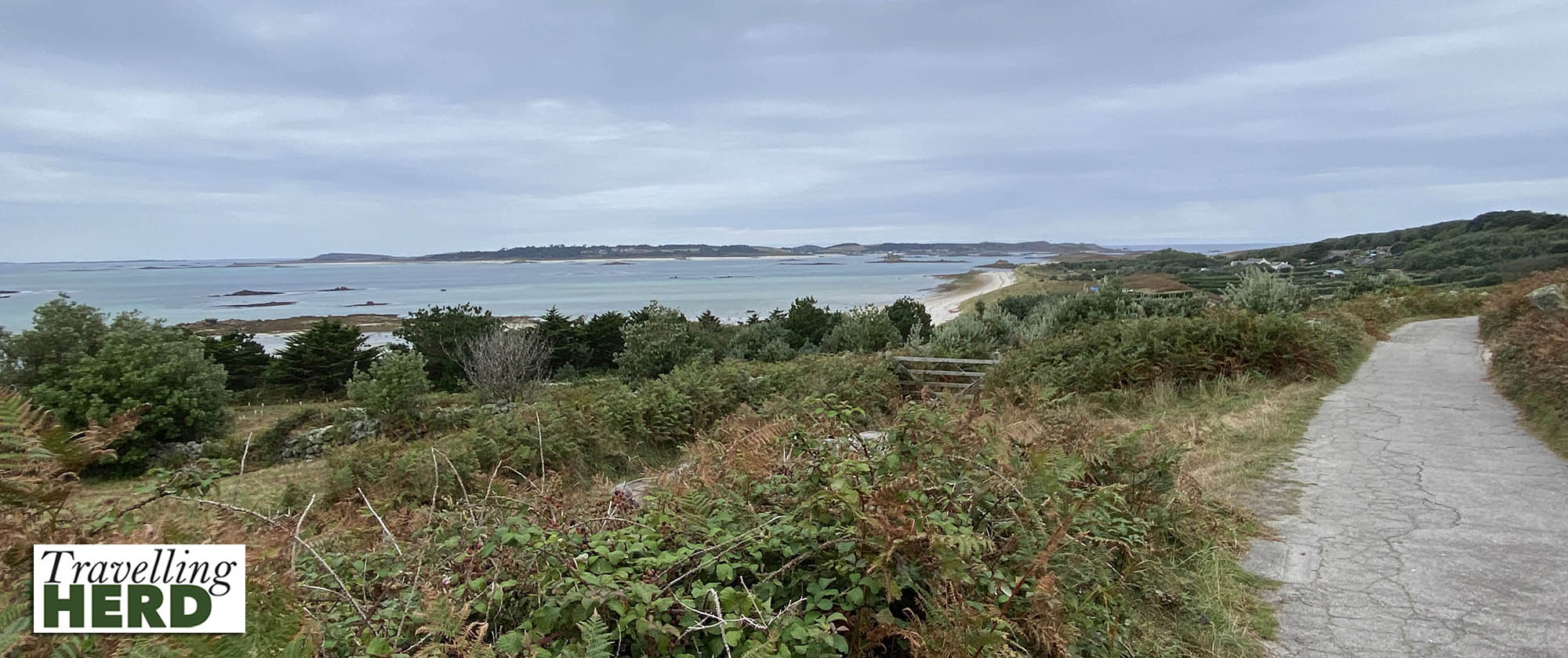
. . . the small and charming Anglican parish church.

Having closed the loop and completed six miles . . .
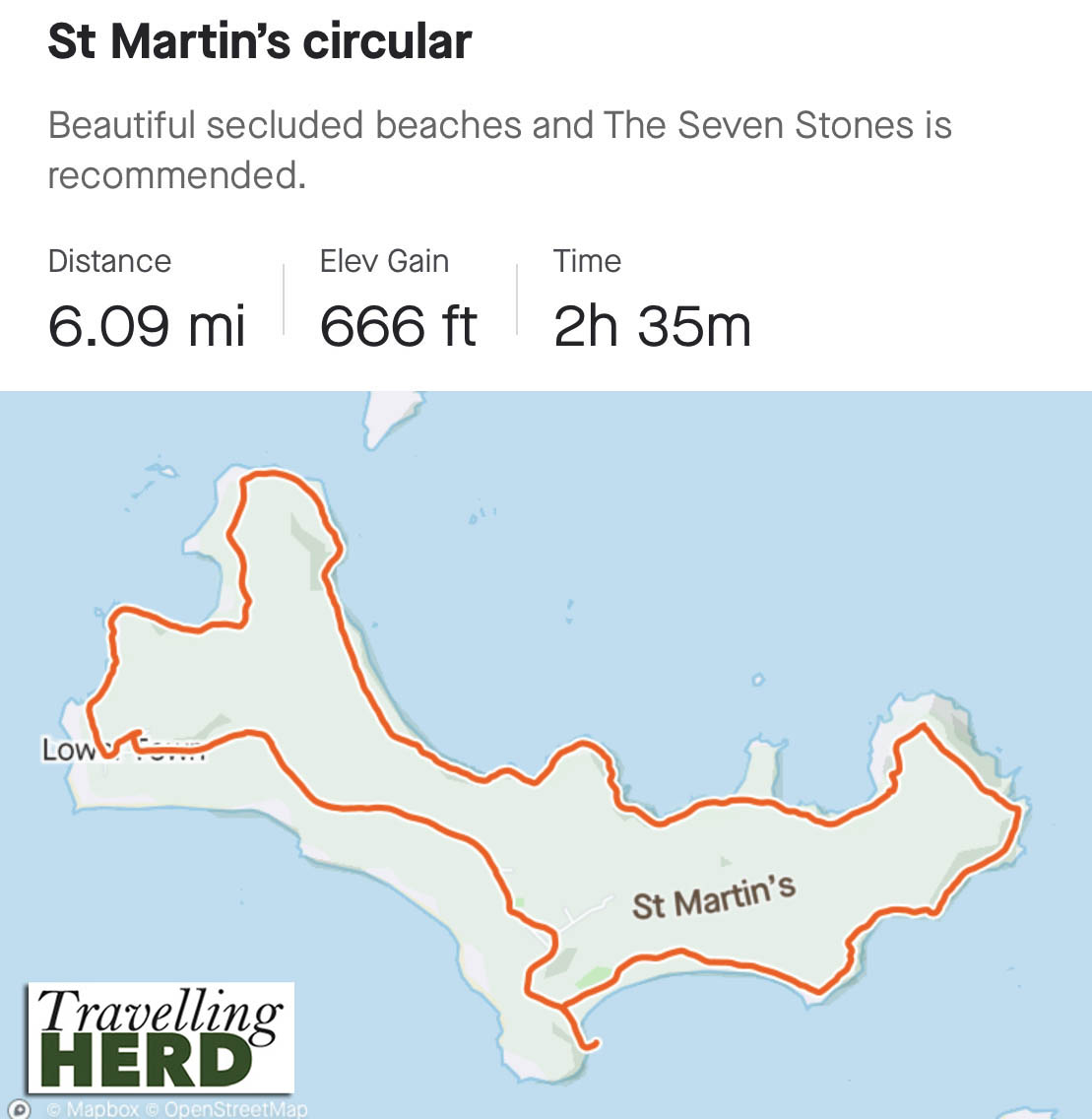
. . . we returned to Lower Town to await the boat back to Tresco which . . .
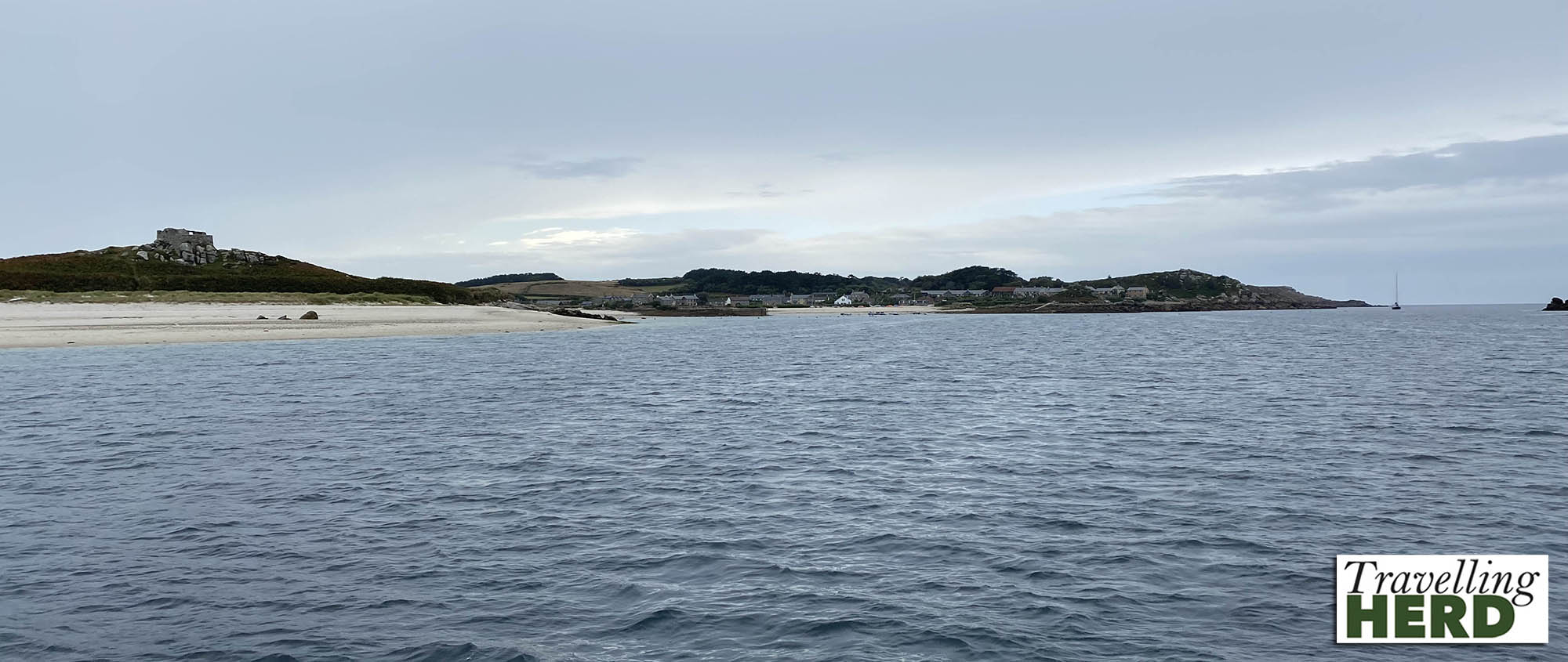
. . . dropped us at Long Point at Old Grimsby which is often under water and is only used at extreme low tide.
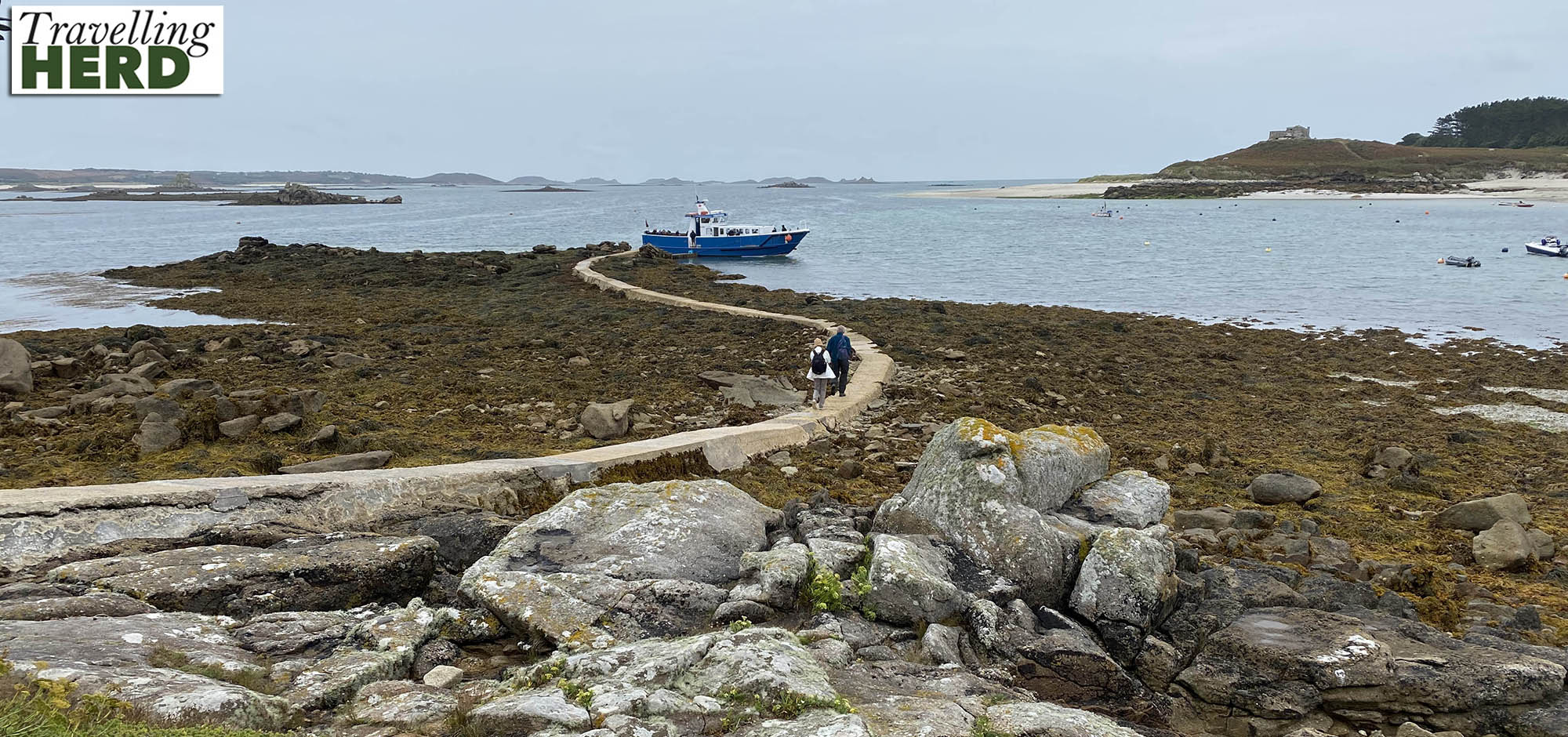
Back on Tresco we had a final supper at The New Inn where Robert had been advised the day before to pre-book his meal from the “specials” board if he wanted to be sure it had not sold out – see the Dish of the day below.
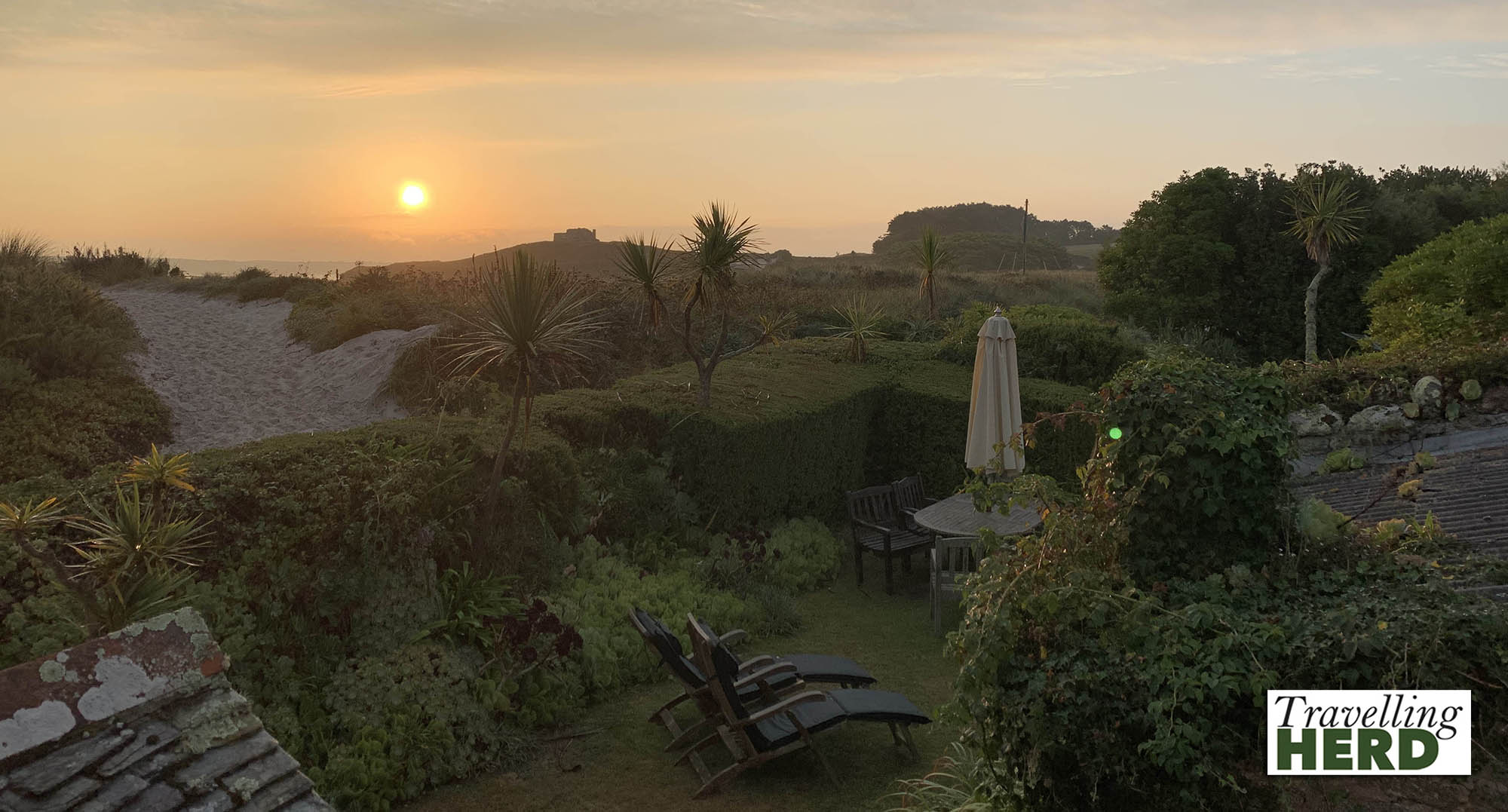
Video of the day:
Selfie of the day:

Dish of the day:
